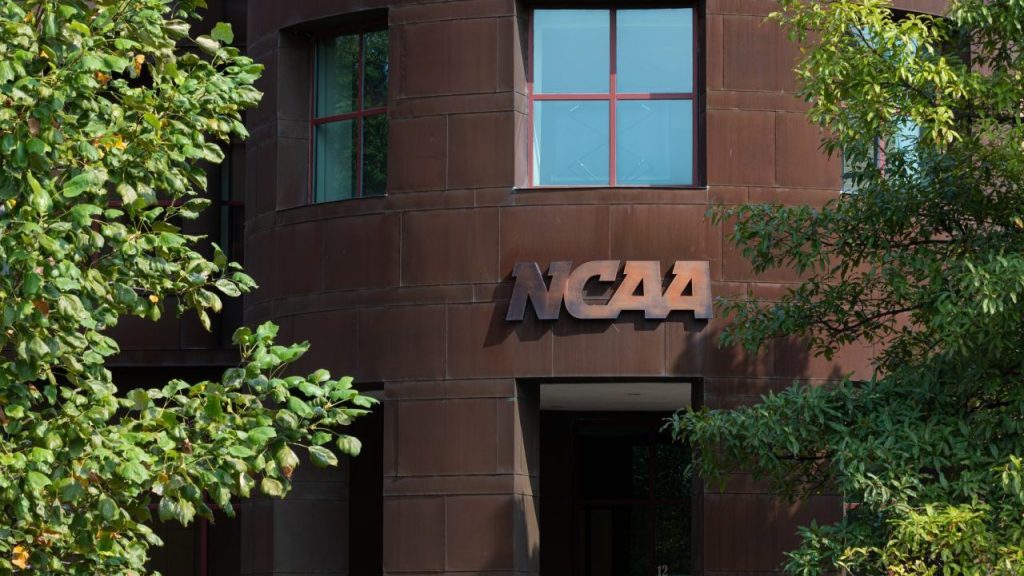The NCAA has decided that “AA” is no longer needed, at least when it comes to outstanding debt.
Last week, the NCAA asked credit rating agency S&P Global to withdraw its latest AA bond credit rating. The decision comes as the NCAA prepares to make a final $1.5 million payment to redeem a series of revenue bonds in 2012, ending a quarter-century of municipal bond financing. The story will come to an end. Final payment on what started as a $13.5 million bond is scheduled for May 1.
An NCAA spokesperson said that once the matter is resolved, the organization will be “completely debt-free” and has “no plans to borrow additional funds at this time.” A spokesperson insisted that the decision to cancel the credit rating was made to save money and not because the NCAA believed a downgrade was imminent. S&P confirmed this position in a press release issued Friday, in which it said the NCAA’s outlook was “stable at the time of withdrawal.”
An “AA” rating refers to investment grade credit where the issuer has “a very strong ability to meet its financial commitments.”
It’s unclear exactly how much the NCAA paid for the ratings. S&P typically charges public financial debtors between $6,500 and $500,000 for credit ratings based on their size, structure and complexity, according to fee disclosures. (Both the NCAA and S&P declined to comment on the financial terms of the agreement.)
The NCAA’s history with municipal bonds dates back to 1999, when it issued an initial series of tax-exempt revenue bonds to pay for litigation and acquisition costs associated with the $56.5 million NIT acquisition. At the time, S&P gave the NCAA a credit rating of AA-. The association just moved its headquarters from Overland Park, Kansas, to Indianapolis, and has signed a 30-year lease (with options for three, 10-year renewals) for its new national office from the Indiana White River State Park Development Commission. tied.
In 2005, the NCAA issued an additional $31.75 million in bonds to pay off part of the 1999 series. S&P rated the issue AA, while Moody’s rated it Aa2. Five years later, before the Series 2005 bonds matured, the association issued an additional $18.75 million in new bonds to pay for a 140,000 square foot addition to the umbrella organization’s national office. S&P had previously raised the NCAA’s credit rating to AA+, but lowered it again to AA in 2017.
The 2012 revenue bond, which carried a premium of $2.65 million, was used to partially repay the 2010 bond.
Technically, all bonds were issued by the Indiana State Department of Treasury. The bureau was created by the state Legislature in 2005 and is an independent “vehicle” that serves as a credit conduit to tax-exempt organizations within the state. However, as part of the loan agreement, the liability for the debt fell directly to the NCAA.
According to the NCAA’s most recent tax returns, $10.49 million of the 2012 series bonds will be retired at the end of fiscal year 2023, during which the NCAA reported $1.3 billion in revenue. The organization reports total debt of $304.1 million, the majority of which is classified as “accounts payable and accrued.”
S&P most recently reaffirmed the NCAA’s AA rating in August 2023, saying the rating was due to the NCAA’s “strong financial ratios, dominant market position in college sports, and the strength of its various broadcast contracts.” He said this reflected his view that it was more than enough. Cover that debt.
At the same time, college sports governing bodies are facing multiple financial headwinds in perhaps the most unstable period in their history.
On Monday, U.S. District Judge Claudia Wilken granted preliminary approval to a $2.8 billion settlement agreement resolving three antitrust lawsuits filed against the NCAA on behalf of college athletes. The proposed settlement would be paid over 10 years using NCAA reserves and future distributions to members.
Even if Wilken were to give final approval to the settlement next year, there are numerous other antitrust cases the NCAA would have to settle or litigate to resolution, ultimately costing billions more. There is a possibility that it will take some time.



